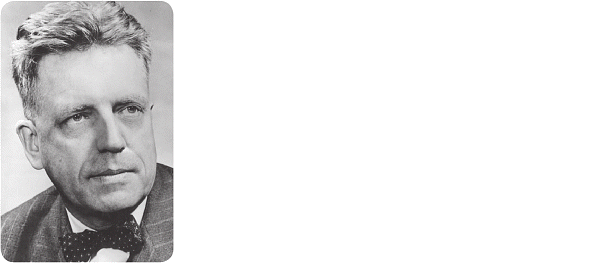FRIDAY, DAY 5
SEXUALITY AND REPRODUCTION
Kinsey
When Alfred Kinsey (1894–1956) was 44 years old, the administration at Indiana University asked him to teach a marriage course. Although his specialty was biology—specifically, the study of wasps—he agreed. It was this decision that forever altered his career, and the study of human sexuality. During his 18 years of studing sexual behavior, Kinsey interviewed more than 18,500 men and women to gather research for his two books, Sexual Behavior in the Human Male and Sexual Behavior in the Human Female. Together, these works sold more than half a million copies and were translated into 12 languages.

It’s easy to understand why Kinsey’s research shocked the world. He argued that some 30 percent of men and 13 percent of women had a same-sex orgasmic experience by age 45. Challenging the predominant view at the time that homosexuality was a mental illness or aberrant behavior, Kinsey wrote that homosexuality and heterosexuality were not mutually exclusive behaviors. Instead, he claimed, they existed on a sliding continuum, and people could shift from one side to the other throughout their lives.
Another notion that Kinsey turned on its head was the idea that women were not interested in sex, partaking in it mainly to please their partners and for procreation. He reported that half of the females he’d interviewed had had premarital intercourse and one in four had engaged in an extramarital affair. What’s more, Kinsey found that masturbation was a widespread act that the majority of men and women engaged in regularly. Throughout his life—and after his death—experts went on to challenge Kinsey’s findings, making the point that his interview process wasn’t scientifically sound and that he had studied only well-to-do, white adults under the age of 35. Still, Kinsey’s work made an indelible mark on the way the medical community and society as a whole thought about sex.
ADDITIONAL FACTS
- In 2004, a biopic entitled Kinsey was released in theaters. The actor Liam Neeson (1952–) played the title role.
- Kinsey’s works later became known as simply the Kinsey Report.
- Kinsey later headed Indiana University’s Institute for Sex Research, which was renamed the Kinsey Institute for Research in Sex, Gender, and Reproduction in 1982, decades after his passing.